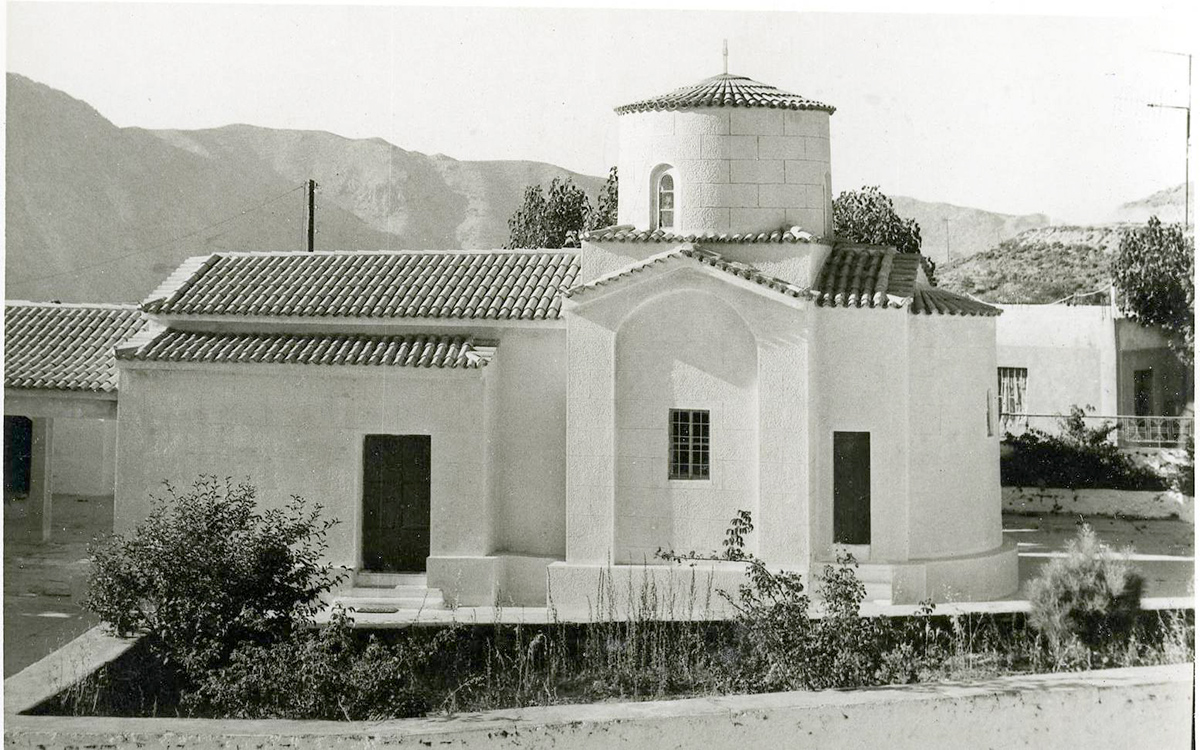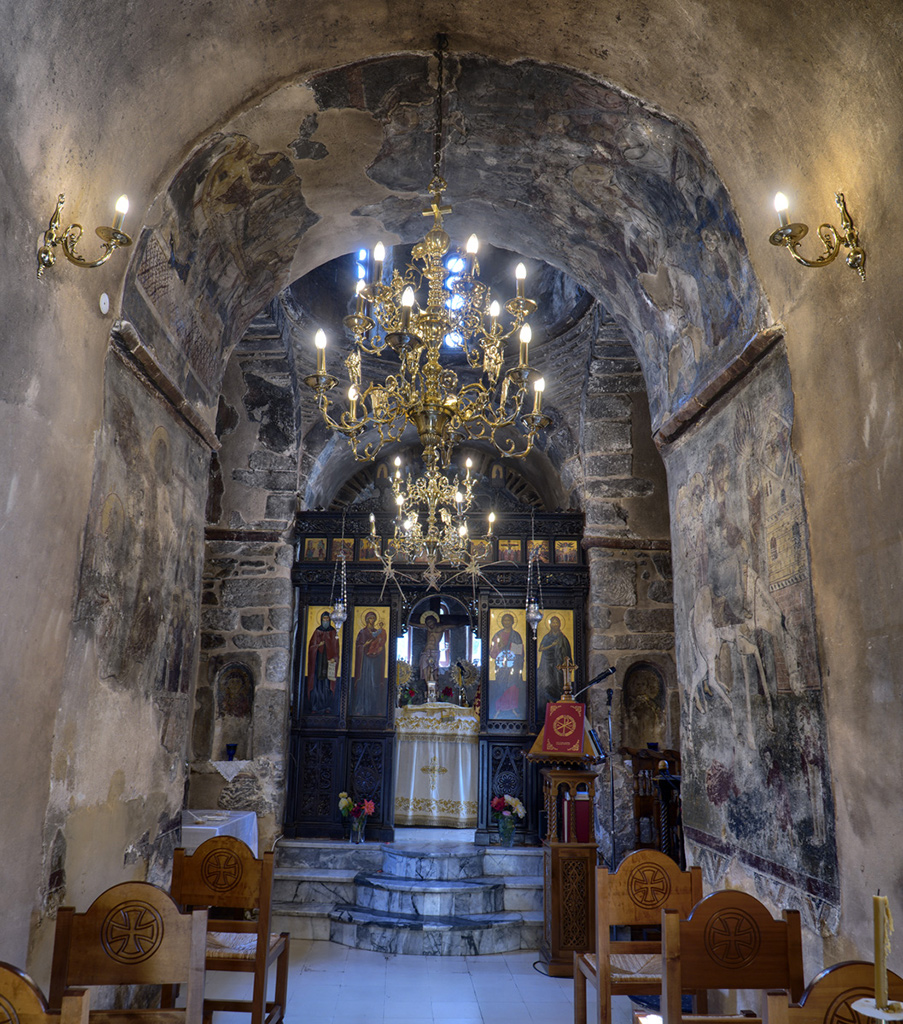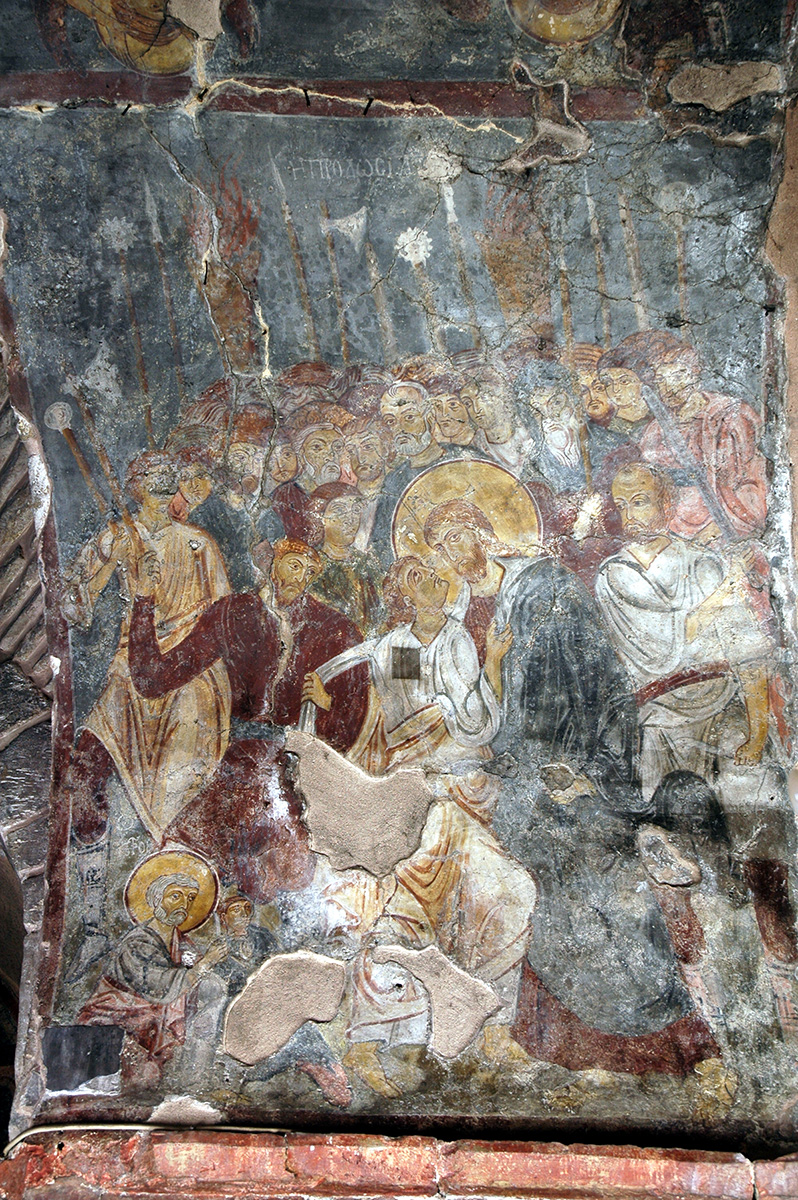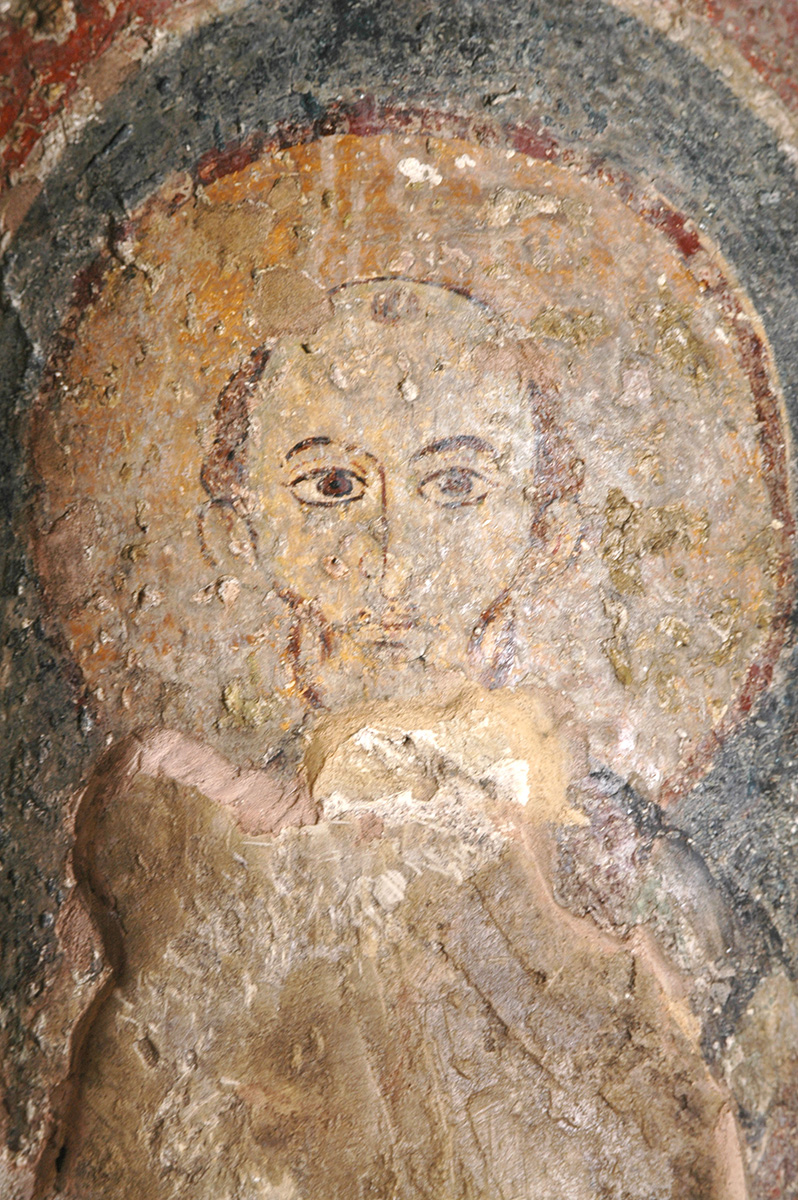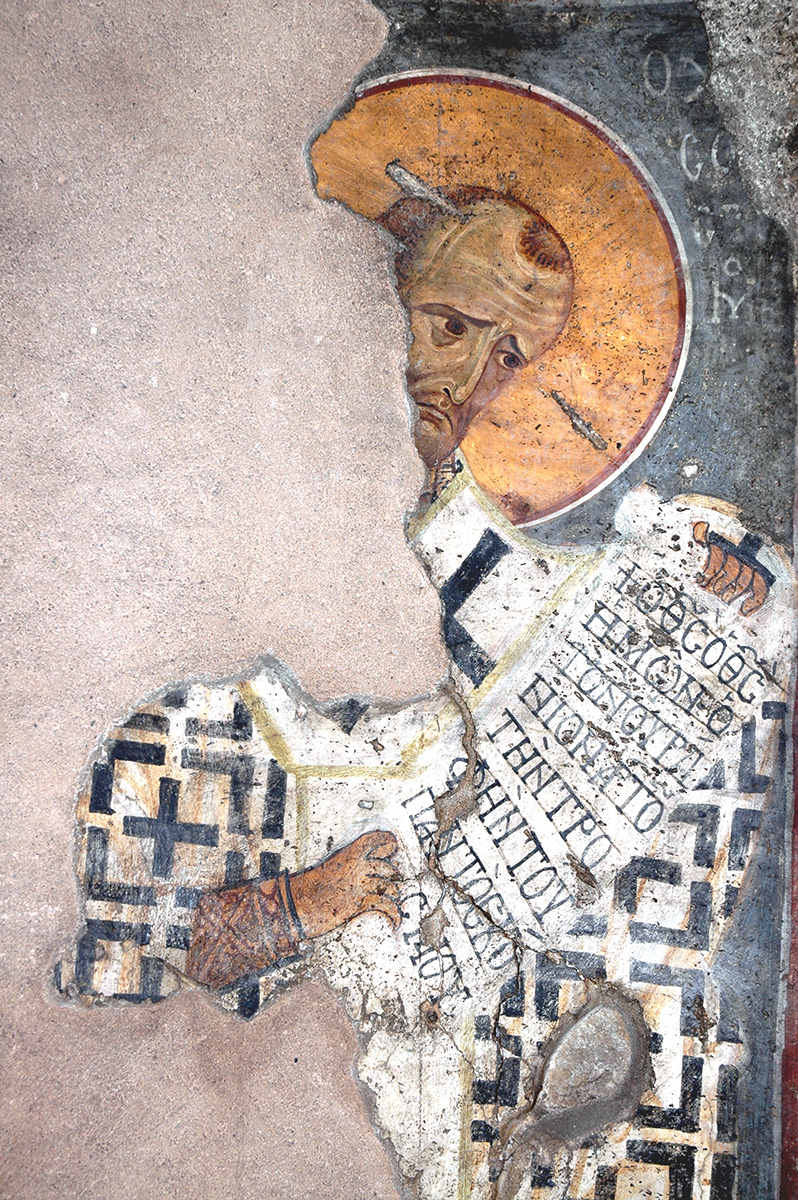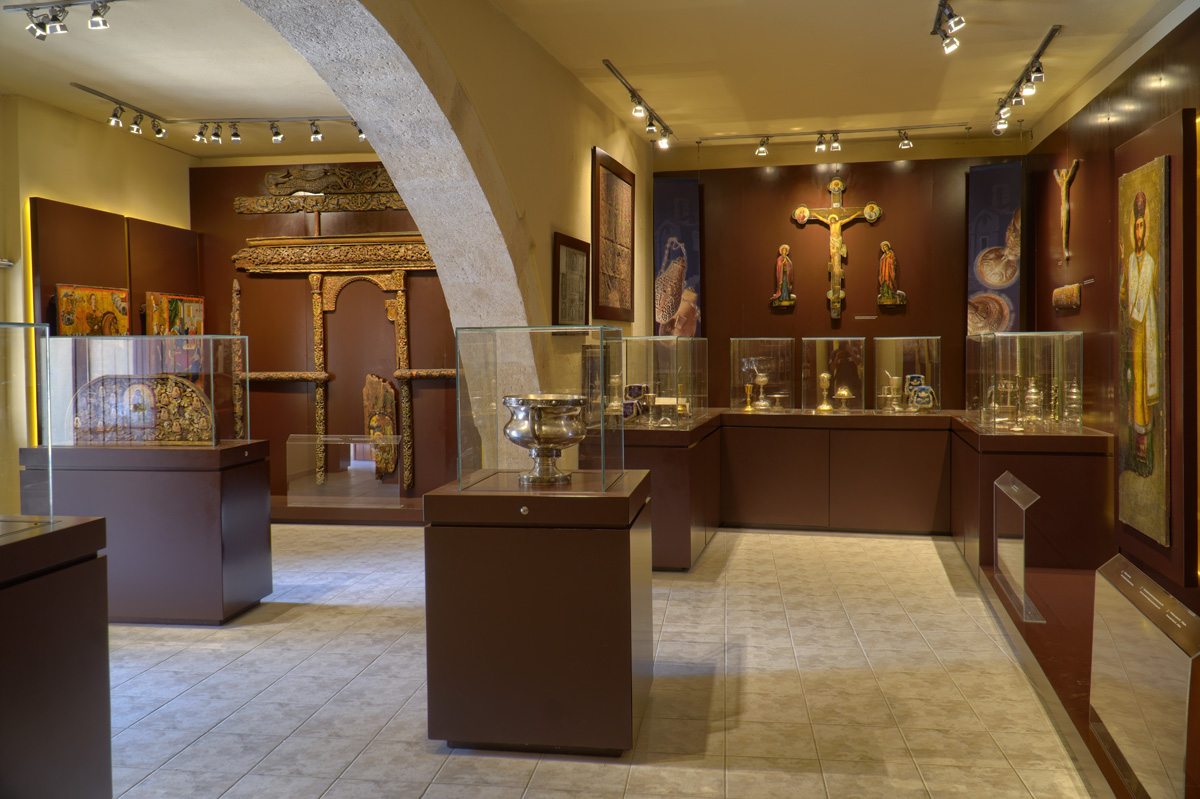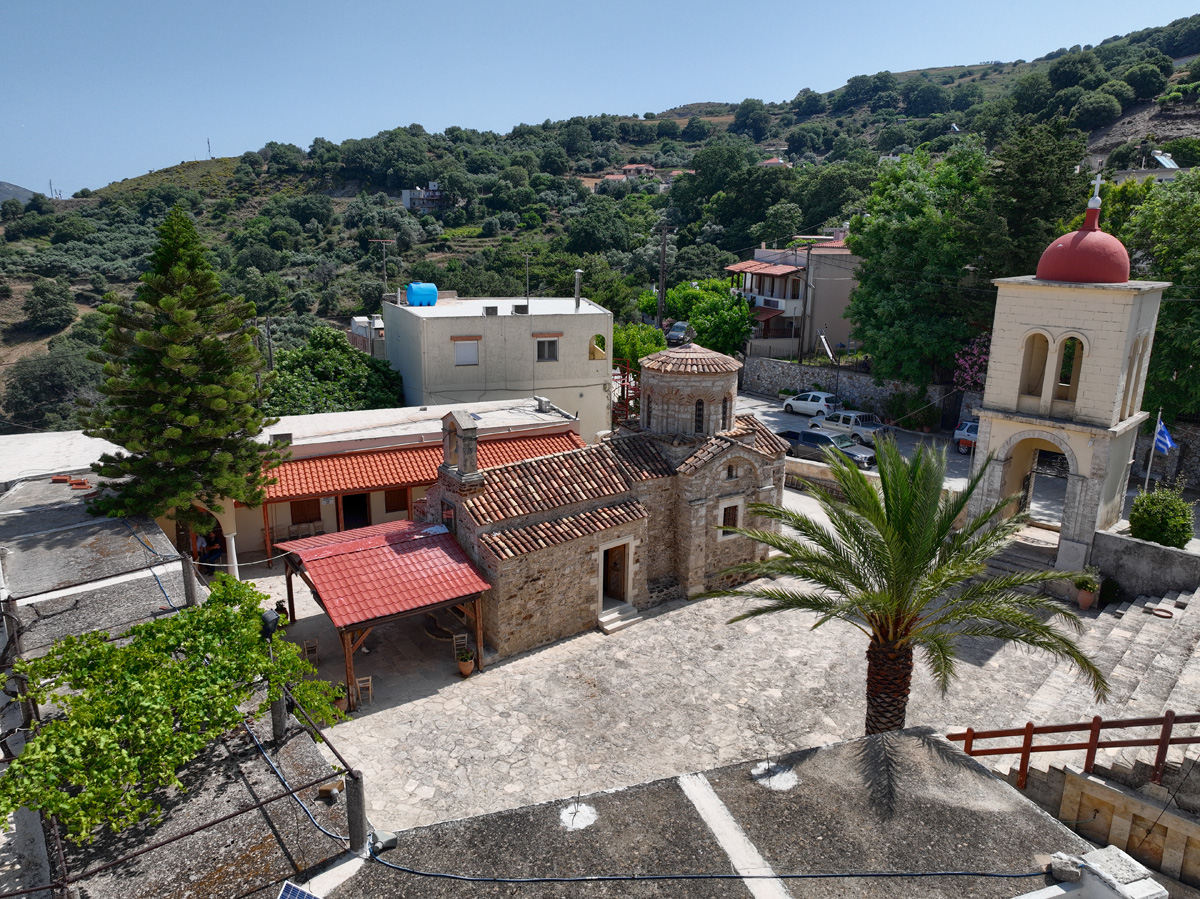
Monastery of Panagia (Virgin Mary) Antiphonetria. Aerial photo.
Myriokefala, Monastery of Panagia (Virgin Mary) Antiphonetria
The church of the Virgin Mary serves as the catholicon of the monastery founded by the hermit Ioannis Xenos in the early 11th century.
The church was built in two phases. Initially, around 1020, was constructed a church in the free cross-plan with a dome and then the narthex was added to the west.
The church's interior preserves three layers of frescoes. The first layer, from the beginning of the 11th century, includes the dome frescoes, as well as figures of saints and bishops in the easternmost part of the church. The 13th-century second layer includes representations from the Christological cycle, such as the Entry into Jerusalem, the Betrayal of Judas, the Entombment, and the Anastasis. The representations of the Dormition of the Virgin and the Deesis (Christ between the Virgin Mary and St. John the Baptist) in the narthex date from the 14th century.
The rest of the monastery’s buildings date from the 18th and 19th centuries. The monastery is an important pilgrimage centre. The monastery houses an exhibition of holy icons and relics.
The Entry into Jerusalem
In the representation of the Entry into Jerusalem, Christ is accompanied by his two disciples, John and Peter. They are the main figures in the scene.
The other figures, such as the people spreading out their clothes for Christ to pass by, the child climbing the tree and the woman welcoming Christ in front of the fortification walls of Jerusalem, are depicted on a smaller scale. Jerusalem is represented as a tall tower with a rhomboid window through which people attend Christ's entry into the city.
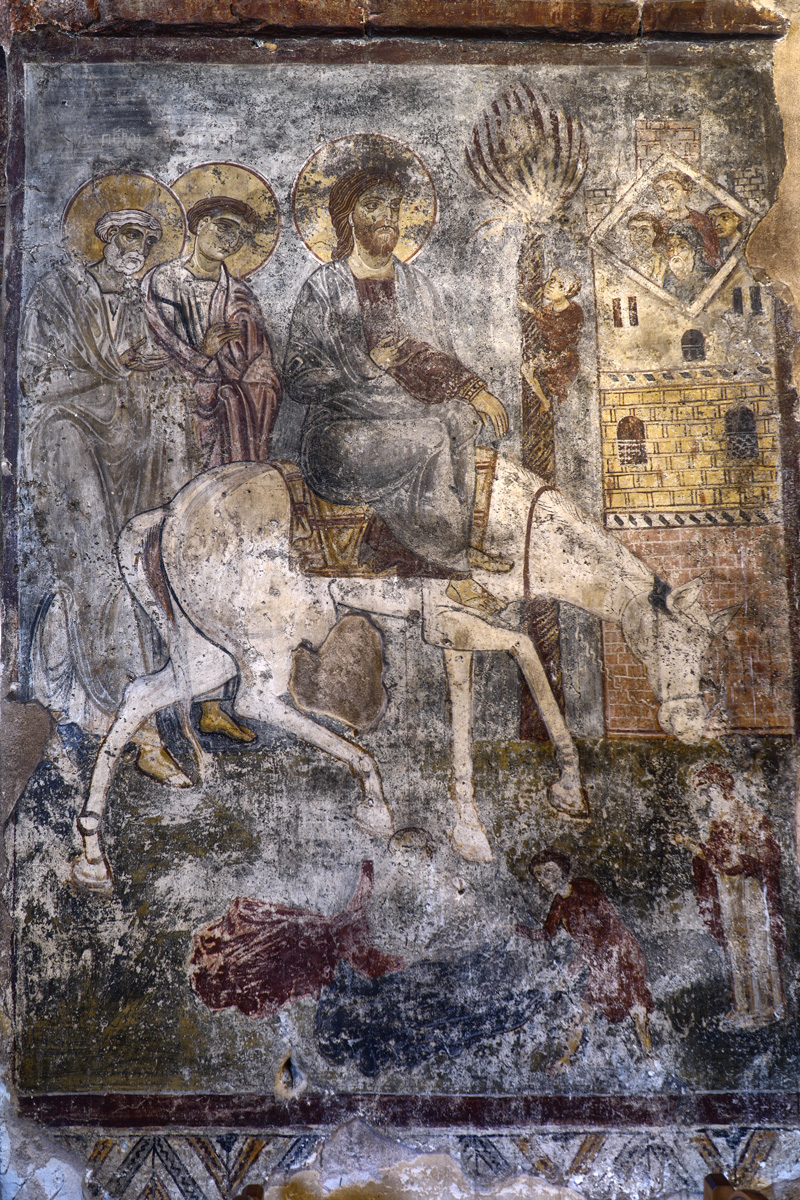
The Entry into Jerusalem.
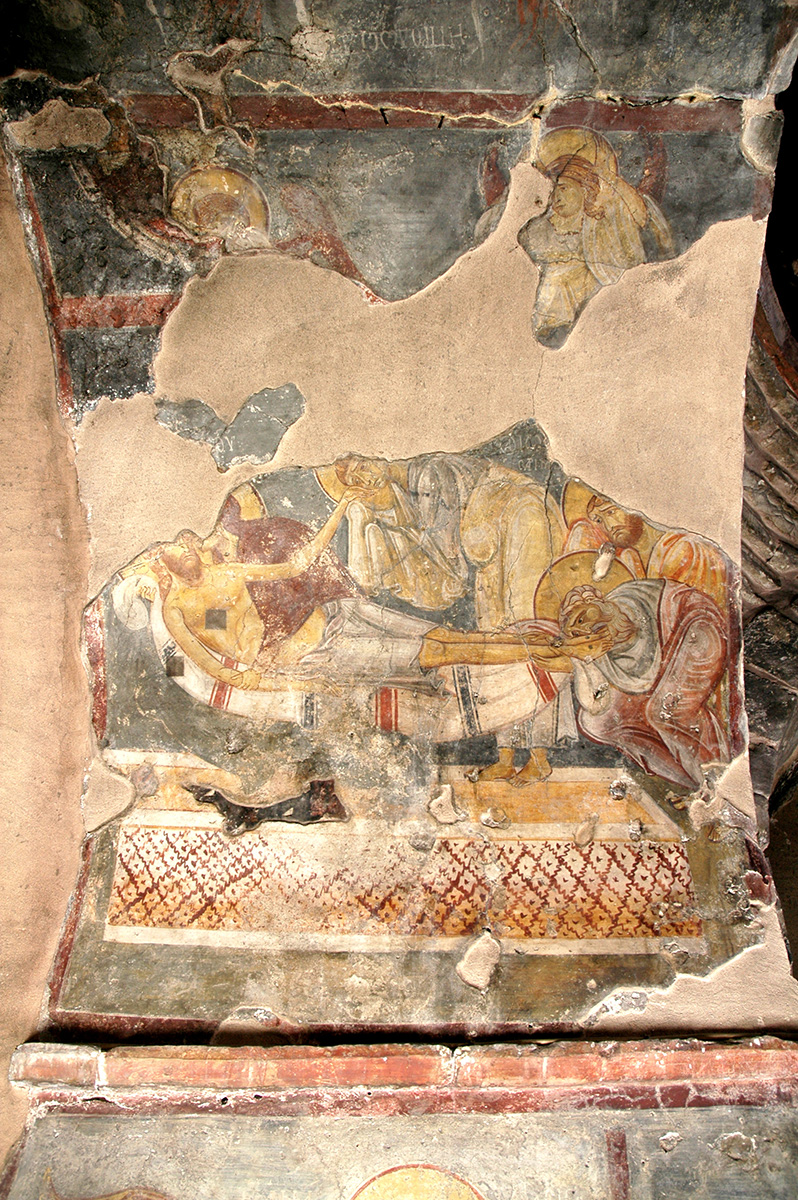
The Entombment (burial).
The Entombment (burial)
The fresco depicts Christ's lifeless body lying on the shroud, with the Virgin embracing it. Saint John, with his hands covered, bends down to hold Christ's left hand, while Joseph of Arimathea kneels and kisses his feet. The young Nicodemus stands behind Joseph. The expressions on their faces reveal their pain.
At the lower part of the fresco, a sarcophagus decorated with rhomboid motifs is depicted. The open sarcophagus may have been added by the painter to clarify the subject of the representation. The awkwardness of its depiction is evident in the way St. John is portrayed as 'balancing' on one edge of it.
Bibliography
Ανδριανάκης, Μ. (1991). Νέα στοιχεία και απόψεις για τη μνημειακή τέχνη της Κρήτης κατά τη Β΄ Βυζαντινή περίοδο», Πεπραγμένα Στ΄ Διεθνούς Κρητολογικού Συνεδρίου, τ. Β΄, Χανιά, 12-13, 23-24.
Ανδριανάκης Μ., Μονή Παναγίας Αντιφωνήτριας, http://odysseus.culture.gr/
Ανδριανάκης, Μ. (2012). Γιαπιτσόγλου, Κ., Χριστιανικά μνημεία της Κρήτης, Ηράκλειο, 264.
Photo Gallery
- View of the church before the removal of plastering.
- The murals revealed under the lime plasters.
- The interior of the church.
- The Betrayal.
- Saint John Chrysostom.
- Co-officiating bishop.
- The monastery’s museum.

